HHS OIG Issues Advisory Opinion on Community Paramedicine
HHS OIG Issues Advisory Opinion Permitting Community Paramedicine Program Designed to Limit Hospital Readmissions
On March 6, 2019, the HHS Office of the Inspector General (OIG) posted OIG Advisory Opinion 19-03. The opinion related to free, in-home follow-up care offered by a hospital to eligible patients for the purpose of reducing hospital admissions or readmissions.
The Requestor was a nonprofit medical center that provides a range of inpatient and outpatient hospital services. The Requestor and an affiliated health care clinic are both part of an integrated health system that operates in three states. The Requestor had previously developed a program to provide free, in-home follow-up care to certain patients with congestive heart failure (CHF) that it has certified to be at higher risk of admission or readmission to a hospital. The Requestor was proposing to expand the program to also include certain patients with chronic obstructive pulmonary disease (COPD). According to the Requestor, the purpose of both its existing program and its proposed expansion was to increase patient compliance with discharge plans, improve patient health, and reduce hospital inpatient admissions and readmissions.
Under the existing program, clinical nurses screen patients to determine if they meet certain eligibility criteria. These include the requirement that the patient have CHF and either: (1) be currently admitted as an inpatient at Requestor’s hospital or (2) be a patient of Requestor’s outpatient cardiology department, and who had been admitted as an inpatient at Requestor’s hospital within the previously 30 days. The clinical nurses would identify those patients at higher risk of hospital admission based on a widely used risk assessment tool. The clinical nurses would also determine whether the patient had arranged to receive follow-up care with Requestor’s outpatient CHF center. Patients that do not intend to seek follow-up care with the CHF center, or who have indicated that they intend to seek follow-up care with another health care provider, would not be informed of the current program. Eligible patients would be informed of the current program, and offered the opportunity to participate. The eligibility criteria for the expanded program for COPD patients would operate in a similar manner.
Eligible patients that elect to participate in the current program or the expanded program would receive in-home follow up care for a thirty (30) day period following enrollment. This follow up care would consist of two visits every week from a community paramedic employed by the Requestor. As part of this in-home care, the community paramedic would provide some or all of the following services:
- A review of the patient’s medications;
- An assessment of the patient’s need for follow-up appointments;
- The monitoring of the patient’s compliance with their discharge plan of care and/or disease management;
- A home safety inspection; and/or
- A physical assessment, which could include checking the patient’s pulse and blood pressure, listening to the patient’s lungs and heart, checking the patient’s cardiac function using an electrocardiogram, checking wounds, drawing blood and running blood tests, and/or administering medications.
The community paramedic would use a clinical protocol to deliver interventions and to assess whether a referral for follow-up care is necessary. To the extent the patient requires care that falls outside the community paramedic’s scope of practice, the community paramedic would direct the patient to follow up with his or her physician. For urgent, but non-life threatening conditions, the community paramedic would initiate contact with the patient’s physician.
The Requestor certified that the community paramedics would be employed by the Requestor on either full-time or part-time basis, and that all costs associated with the community paramedic would be borne by the Requestor or its affiliates. The Requestor further certified that no one involved in the operation of the program would be compensated based on the number of patient’s that enroll in the programs. While one of the states in which the Requestor operates does reimburse for community paramedicine services, Requestor certified that it does not bill Medicaid for services provided under the program.
The question posed to the OIG was whether any aspect of the program violated either the federal anti-kickback statute or the prohibition against the offering of unlawful inducements to beneficiaries.
In analyzing the program, the OIG first determined that the services being offered under the program offer significant benefit to enrolled patients. The OIG specifically cited the fact that one state’s Medicaid program reimbursed for similar services as evidence of this value proposition. For this reason, the OIG concluded that the services constitute “remuneration” to patients. The OIG further concluded that this remuneration could potentially influence a patient’s decision on whether to select Requestor or its affiliates for the provision of federally reimbursable items and services. Therefore, the OIG concluded that the program implicated both the anti-kickback statute and the beneficiary inducement prohibition.
The OIG then analyzed whether the program would qualify for an exception under the so-called “Promoting Access to Care Exception.” This exception applies to remuneration that improves a beneficiary’s ability to access items and services covered by federal health care programs and which otherwise pose a low risk of harm. The OIG determined that while some aspects of the program would likely fall within this exception, other aspects would not. Specifically, the OIG cited the home safety assessment as not materially improving a beneficiary’s access to care.
Having concluded that there was no specific exception that would permit the arrangement, the OIG then analyzed the arrangement under its discretionary authority, ultimately concluding that the program posed little risk of fraud or abuse. In reaching this conclusion, the OIG cited several factors:
- The OIG felt that the potential benefits of the program outweighed the potential risks of an improper inducement to beneficiaries. The OIG cited the fact that beneficiaries must have already selected Requestor or its associated clinic as their provider of services before learning about the program. As the OIG indicated “the risk that the remuneration will induce patients to choose Requestor or the Clinic for CHF- or COPD-related services is negligible because patients already have made this selection.” The OIG also noted that the community paramedic will inform beneficiaries of their right to choose a different provider prior to referring the beneficiary to the Requestor or its clinic for services outside the scope of the program.
- The OIG noted that, to the extent the program works as intended, it would be unlikely to lead to increased costs to federal health care programs. As noted above, Requestor had certified that it would not bill federal health care programs for the services of the community paramedic.
- The program was designed in a way as to minimize the potential for interference with clinical decision-making.
- The Requestor certified that it would not advertise or market the program to the public, thereby minimizing the chances of beneficiaries learning about the program prior to selecting Requestor for their CHF- or COPD-related care.
- The OIG noted that the program appeared to be reasonably tailored to accomplish the goal of reducing future hospital admissions. For example, the OIG cited the fact that the Requestor limited inclusion in the program to patients deemed to be at a higher-than-normal risk of hospital admission or readmission, and that it made these determinations using a widely used risk assessment tool. The OIG noted that these patients would likely benefit from the continuity of care offered under the program. In addition, the OIG noted that the community paramedics would be in a position to keep the patients’ physicians appraised of their health by documenting all of their activities.
Potential Impact on Mobile Integrated Health and/or Community Paramedicine Programs
OIG advisory opinions are issued directly to the requestor of the opinion. The OIG makes a point of noting that these opinions cannot be relied upon by any other entity or individual. Legal technicalities aside, the OIG’s opinion is extremely helpful to the industry, as it lays out the factors the OIG would consider in analyzing similar arrangements. Thus, the opinion is extremely valuable to ambulance providers and suppliers that current operate, or are considering the operation of, similar mobile integrated health and/or community paramedicine programs.

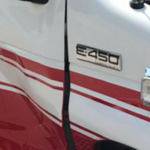
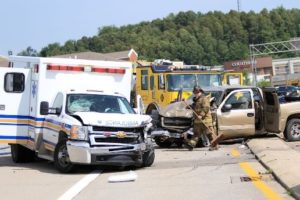

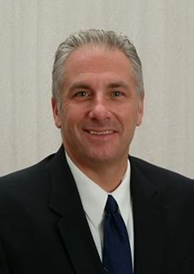


 By Cindy Elbert
By Cindy Elbert
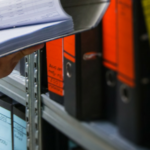


 ALS Monitors / Defibrillators and Automated CPR Devices Related Equipment, Accessories & Product Upgrades
ALS Monitors / Defibrillators and Automated CPR Devices Related Equipment, Accessories & Product Upgrades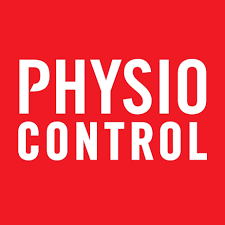
 Contact
Contact